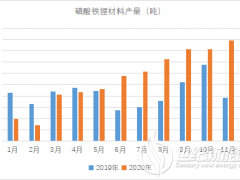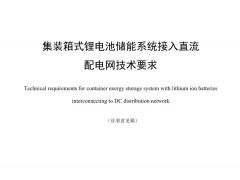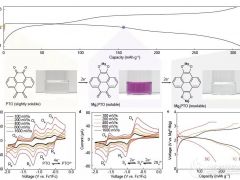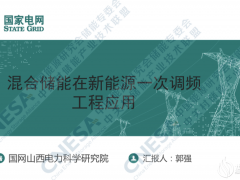
美国海军陆战队空中地面作战中心拥有10兆瓦的军事微电网
在阐述微电网技术推广的理由时,美国国防部门指出,美国主要的停电事件在数量和严重程度上都在增加。此外,军事基地也经常遭遇中断事件,并且中断的时间更长。
“人们越来越担心,军事基地是否可以在持续数天或数周的电力中断期间保持关键功能,而不是短短的几个小时。美国国防部正在积极寻求微电网储能部署,以保障能源安全,提供更长时间的后备电源。”招标通告上说。
美国国防部门正在关注提高能源安全的创新,并计划对微电网有无采用储能部署的成本方面进行比较。
该计划将通过以下方面来衡量储能性能:
•覆盖范围:提供备用电源的容量
•可用性:可用的覆盖范围每年的小时数
•可靠性:独立备份的可靠性级别(N + 1,N + 2 ...)
•持续时间:可以保持连续供电的小时数
•脱网运转能力:能够为负载提供具有适当电能质量的不间断电源
•堆叠价值:获得收益和节省成本,以及与微电网的投资成本和运营成本相关的成本组合
美国国防部将评估其20年的净生命周期成本,并考虑到微电网储能部署的安装、维护、更换、电费和市场收入。微电网储能部署将与采用太阳能的基准柴油发电机(见下图)进行比较。基准微电网将依靠一套2000千瓦的柴油发电机组提供电能。每台发电机的热耗值为10,618 BTU / kWh。

这个项目将分两个阶段执行。
第一阶段将涉及各个气候区域和能源市场中微电网的设计和建模。美国军方预计2018年夏季开始进行第一阶段工作,并将于2019年3月完成。
第二阶段需要进行技术论证和验证。美国国防部将选择一些模拟系统的子集,在少数军事设施中展示具有发展前途的技术。第二阶段提案的申请将于2019年春季发布。
目前,美国国防部的环境安全技术认证计划(ESTCP)只寻求第一阶段的预先提案。(中国储能网独家编译,转载请注明来源)
U.S. Military Issues Solicitation for Microgrids with Energy Storage
January 10, 2018 By Elisa Wood Leave a Comment
The U.S. Department of Defense (DoD) issued a solicitation Tuesday seeking pre-proposals for multiple projects at military installations that will assess large-scale energy storage within microgrids.
Marine Corps Air Ground Combat Center’s Twentynine Palm, home of a 10-MW military microgrid
Applications are due March 8 by 2 p.m. ET.
In describing its reason for pursuing microgrid technology, the defense department noted that major power outages are growing in number and severity in the United States. In addition, military bases are experiencing outages more often, and those outages last longer.
“There is growing concern whether military bases can maintain critical functions during outages that last for days or weeks, as opposed to hours. DoD is actively pursuing the deployment of microgrid technologies to provide improved energy security for longer durations,” says the solicitation.
The defense department is focusing on innovations that improve energy security. It plans to compare the cost of achieving energy security with or without energy storage within a microgrid.
The program will measure energy storage performance in terms of:
Coverage: Kilowatts of backup power provided
Availability: Number of hours per year for which coverage is available
Reliability: Level of independent backups for reliability (N+1, N+2…)
Duration: The number of consecutive hours that coverage can be maintained
Ride-through capability: The fraction of load for which uninterrupted power with appropriate power quality can be provided
Stacked-value: The combination of revenue and savings and any avoided costs associated with the capital and operations cost of the microgrid
The defense department will assess cost over a 20-year net life-cycle period, with consideration given to installation, maintenance, replacement, electricity bills, and market participation revenues. The energy storage microgrid will be compared to a baseline diesel generator (see graphic below) with solar added. The baseline microgrid will rely on a set of 2,000 kW diesel generators. Each generator will have a heat rate of 10,618 BTU/kWh.
Projects will be executed in two phases.
The first phase will involve design and modeling of the microgrids in various climate zones and energy markets. The military anticipates Phase 1 work beginning next summer and being completed by March 2019.
The second phase requires technology demonstration and validation. Defense will select a subset of modeled systems to demonstrate promising technology at a few military installations. A request for Phase II proposals will go out in spring of 2019.
Currently, the Environmental Security Technology Certification Program (ESTCP) is seeking pre-proposals for Phase I only.
An an online seminar, “ESTCP Funding Opportunities – FY 2019,” will be offered on January 18 from 1:30 – 2:30 p.m. ET. During the online seminar, participants will have the opportunity to ask questions about the funding process, the current ESTCP solicitation, and the proposal submission process.
 微信客服
微信客服 微信公众号
微信公众号









0 条